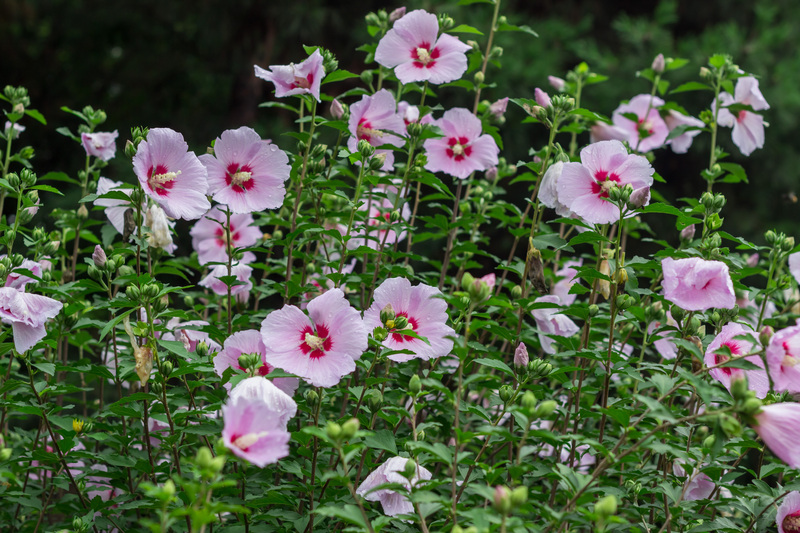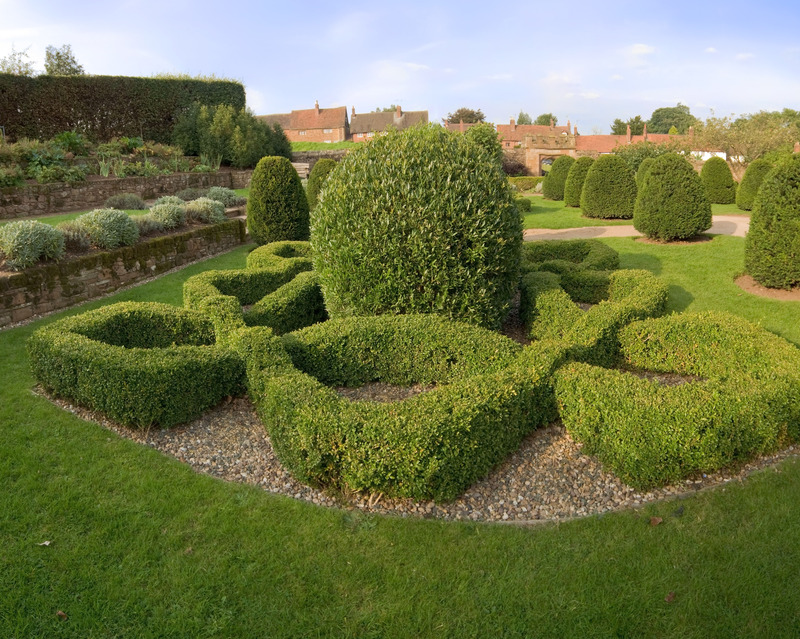Design a Meditative Space with Inspired Zen Garden Ideas
Posted on 21/09/2025
Design a Meditative Space with Inspired Zen Garden Ideas
In today's fast-moving world, finding moments of peace is essential for our mental and emotional wellbeing. Designing a meditative space in your home or garden gives you a sanctuary to relax, recharge, and reconnect with yourself. Drawing inspiration from ancient Japanese gardens, a Zen garden offers more than just visual appeal -- it cultivates tranquility, mindfulness, and inner harmony. In this comprehensive guide, explore a range of Zen garden ideas to design your perfect meditative haven, whether you have a sprawling backyard or a cozy urban balcony.
Understanding the Essence of the Zen Garden
A Zen garden, also known as Karesansui or "dry landscape" garden, is a minimalist and contemplative garden design originated in Japan. Traditional Zen gardens use rocks, gravel, sand, moss, and carefully selected plants to symbolize natural elements like water, mountains, and forests. The focus is on simplicity, asymmetry, and balance, creating a space that encourages relaxation and meditation.
- Minimalistic design: Less is more in Zen gardens. Every element carries symbolic meaning and is thoughtfully placed.
- Symbolic representation: Rocks often represent mountains, while gravel or sand is raked to mimic water ripples.
- Mindful arrangement: Paths, seating, and plantings are positioned to foster mindful movement and contemplation.

The Benefits of a Zen-Inspired Meditative Space
Integrating Zen garden concepts into your personal retreat offers a variety of benefits:
- Stress reduction: Calm, natural surroundings help lower cortisol levels and enhance relaxation.
- Increased mindfulness: The act of tending to the garden or simply observing its elements promotes present-moment awareness.
- Enhanced focus: Fewer distractions in a minimalist environment can lead to deeper meditation and mental clarity.
- Connection with nature: Even small Zen gardens connect us to the natural world, boosting mood and emotional balance.
Key Elements of a Zen Garden Design
To create a meditative Zen-inspired garden, focus on several key components:
Rocks and Stones
Rocks are central to Zen gardens. Large stones represent mountains or islands, serving as focal points in the landscape. Arrange them asymmetrically to embody the imperfect beauty of nature (wabi-sabi). Smaller pebbles may be scattered to symbolize stepping stones or riverbeds.
- Use a variety of sizes and shapes.
- Group stones in odd numbers for organic balance.
- Half-bury rocks to mimic natural placement.
Sand and Gravel
Raked sand or gravel simulates flowing water. The act of raking itself can be a mindful, meditative practice, while the resulting patterns soothe the eye and mind.
- Choose fine, pale-colored gravel or sand for the best visual effect.
- Experiment with patterns: swirls, zig-zags, and parallel lines evoke different water flows.
- Smooth and refresh the patterns regularly for visual interest and ritual mindfulness.
Moss and Greenery
Moss embodies quiet resilience and timelessness. Its soft, lush surface contrasts beautifully with stones and gravel. You can also include low-maintenance ferns, miniature evergreens, or bamboo for added color, texture, and vertical interest.
- Cluster moss around base of rocks for natural effect.
- Limit varieties to maintain a unified, calming palette.
- Consider hardy, shade-tolerant mosses for longevity.
Water Features (Symbolic or Real)
Many Zen garden designs evoke water through suggestion. Raked gravel or sand imitates streams or ponds; however, a small pond, fountain, or basin (tsukubai) can also be integrated for sound, movement, and wildlife.
- Choose a location near seating areas for maximum impact.
- Keep water features subtle: think stone bowls, bamboo spouts, or hidden trickles.
- Add water-loving plants for a soft touch.
Paths and Stepping Stones
A well-placed path guides visitors through the garden. Meandering walkways with stepping stones invite slow walking meditation, reinforcing the garden's contemplative spirit.
- Use irregularly shaped stones or natural gravel paths.
- Arrange stones asymmetrically to encourage attention to each step.
- Position paths to direct views toward focal points like lanterns or sculptures.
Minimalist Ornamentation
Keep decorations simple and meaningful. Japanese lanterns, small Buddha statues, or a bamboo water spout (shishi-odoshi) can add authenticity without cluttering the space.
- Limit the number of ornaments--each should serve a purpose.
- Choose weathered, natural materials over bright colors.
Step-by-Step Guide to Designing Your Zen Meditative Garden
Follow these actionable steps to create your ideal meditation garden inspired by Zen aesthetics:
Step 1: Define the Space
- Decide whether you want an outdoor sanctuary or an indoor Zen garden for meditation.
- Assess available space -- Zen gardens work well in both expansive yards or compact patios and balconies.
- Clear the area of clutter and existing plants or materials that don't align with your vision.
Step 2: Plan the Layout
- Sketch a rough plan, defining areas for rocks, sand or gravel, greenery, and seating.
- Arrange focal points (main rocks, water features) off-center for natural asymmetry.
- Leave open space for a sense of calm and emptiness, an important principle in Zen design.
Step 3: Select and Place Materials
- Source natural, local stones for authenticity and environmental harmony.
- Choose gravel or sand that complements your home and existing landscape.
- Add living plants thoughtfully -- opt for evergreens, moss, or ornamental grasses for year-round appeal.
Step 4: Incorporate Paths and Seating
- Build a simple bench from stone, weathered wood, or natural materials for meditative sitting.
- Lay stepping stones leading to your meditation spot, ensuring a gentle, flowing movement through the garden.
Step 5: Add Finishing Touches
- Install subtle lighting for early morning or evening meditation.
- Incorporate one or two symbolic decorative elements--such as a stone lantern or a small statue--that resonate personally.
- Rake and maintain the gravel or sand regularly, making mindfulness a part of your routine.
Beautiful Zen Garden Ideas for Every Space
Small Urban Zen Retreat
Even limited space can host a meditative Zen garden. Use a large container or tabletop tray with miniature rocks, moss, and sand for a portable Zen garden. Balcony spaces support potted bamboo, smooth pebbles, and a raked sand corner for quick moments of peace.
Courtyard Sanctuary
Enclose your courtyard with bamboo fencing or living walls for privacy. Place a central stone sculpture or shallow water basin as a visual anchor. Mix paving stones with pockets of moss and sand for textural interest.
Expansive Rock Garden
Larger backyards can accommodate meandering dry stream beds made from raked gravel, punctuated by groupings of boulders and dwarf evergreens. Multiple seating areas offer choices for meditation or quiet reading.
Indoor Zen Meditation Corner
Bring nature indoors by converting a sunny nook or windowsill into a tabletop Zen garden. A low tray with white sand, a few handpicked stones, and an aromatic bonsai evoke the tranquility of larger outdoor gardens in compact spaces.
Water-Inspired Zen Oasis
If space allows, install a koi pond or a small trickling waterfall. The sound of water adds a soothing auditory dimension, elevating meditation and reflection.
Tips for Maintaining Your Zen Meditation Garden
- Embrace imperfection: Natural weathering and growth add to your garden's charm.
- Practice regular care: Rake gravel, trim greenery, and sweep pathways as a mindful ritual.
- Stay clutter-free: Reassess and remove elements that don't inspire calm or joy.
Personalizing Your Meditative Zen Space
While tradition offers invaluable guidance, your mindful garden design should reflect your personal taste and spiritual needs. Consider these ideas for customization:
- Color palette: Stick to earthy neutrals for authenticity, or introduce subtle color through seasonal flowers or ceramics.
- Soundscapes: Add bamboo wind chimes, small fountains, or meditation bells for a multisensory experience.
- Aromatherapy: Incorporate fragrant herbs such as lavender, rosemary, or Japanese incense for extra relaxation.
- Seating choice: Choose a zaisu (legless chair), meditation cushion, or traditional tatami mat for comfort.

Integrating Mindfulness Practices into Your Zen Garden
Your newly designed Zen meditation sanctuary can become the centerpiece for a range of mindful activities:
- Meditation: Use your garden as a daily meditation spot, fostering peace and clarity.
- Yoga: Small, smooth areas can double as gentle yoga spaces.
- Walking meditation: Trace slow paths along your garden's stepping stones with focused intention.
- Journaling: Reflect and write in your garden's calm atmosphere for insight and creativity.
Conclusion: Cultivate Calm with Inspired Zen Garden Ideas
Designing a meditative space with Zen garden inspiration is more than a landscaping project--it's an invitation to slow down, observe, and experience tranquility in your everyday life. Whether small or large, inside or outside, these timeless Zen garden ideas encourage stillness, reflection, and harmony with nature. Start with one or two elements and grow your sanctuary over time. Soon, you'll have a serene corner that nurtures the mind, soothes the senses, and supports your journey to peace.
Ready to create your meditative haven? Use these Zen garden design tips to begin your journey toward a more mindful, balanced, and tranquil life -- right in your own home.
```
